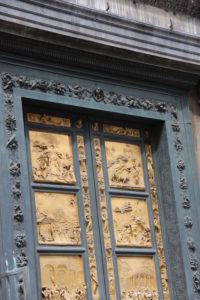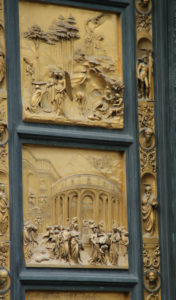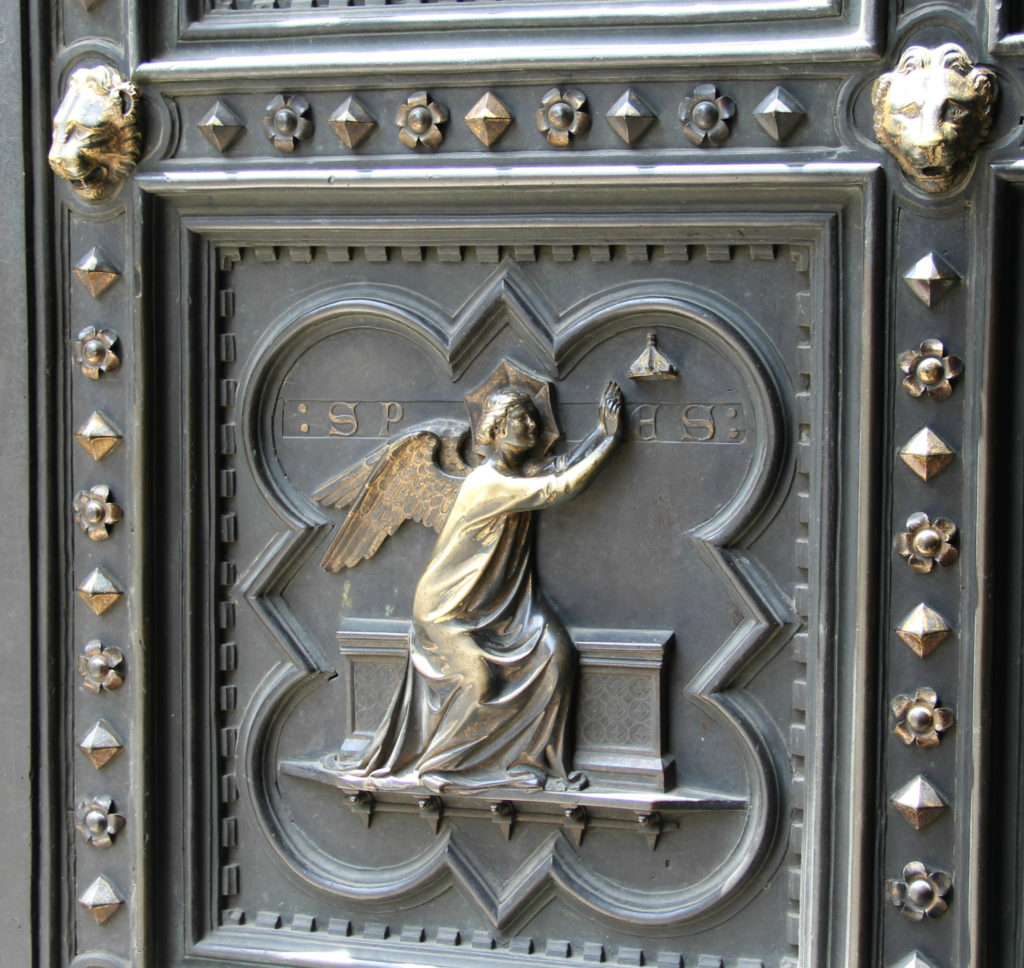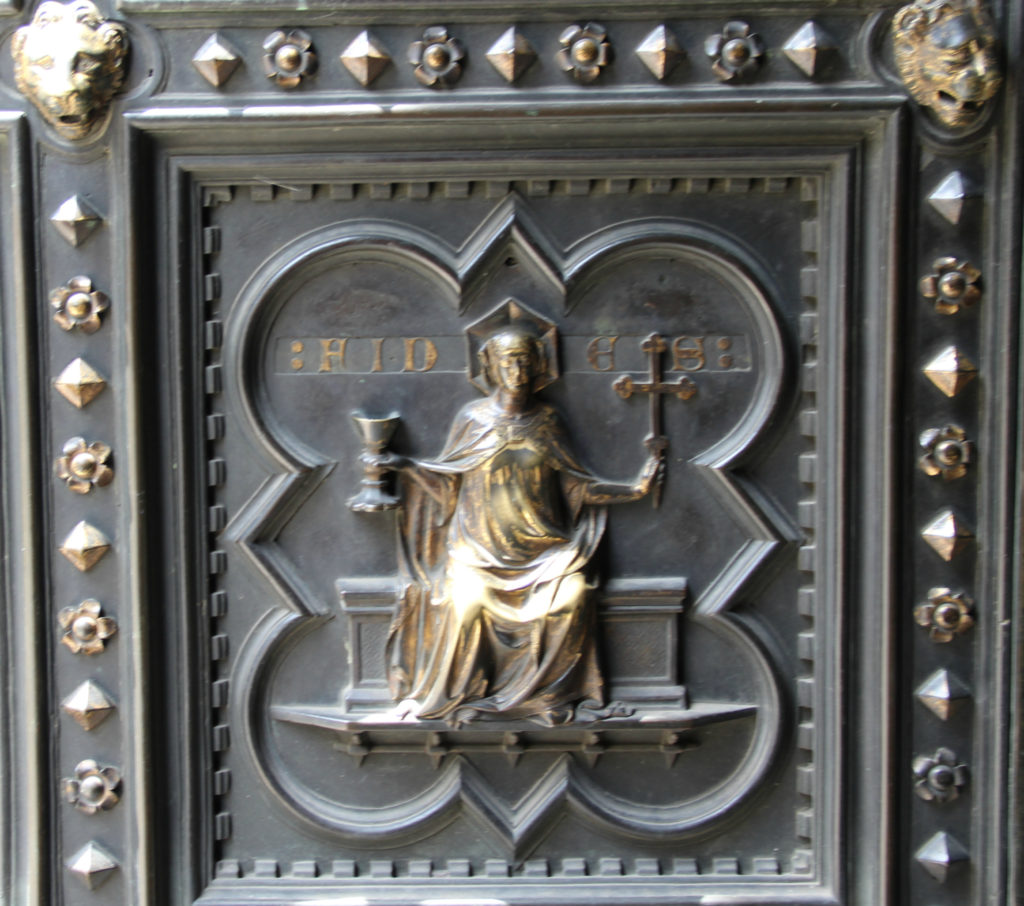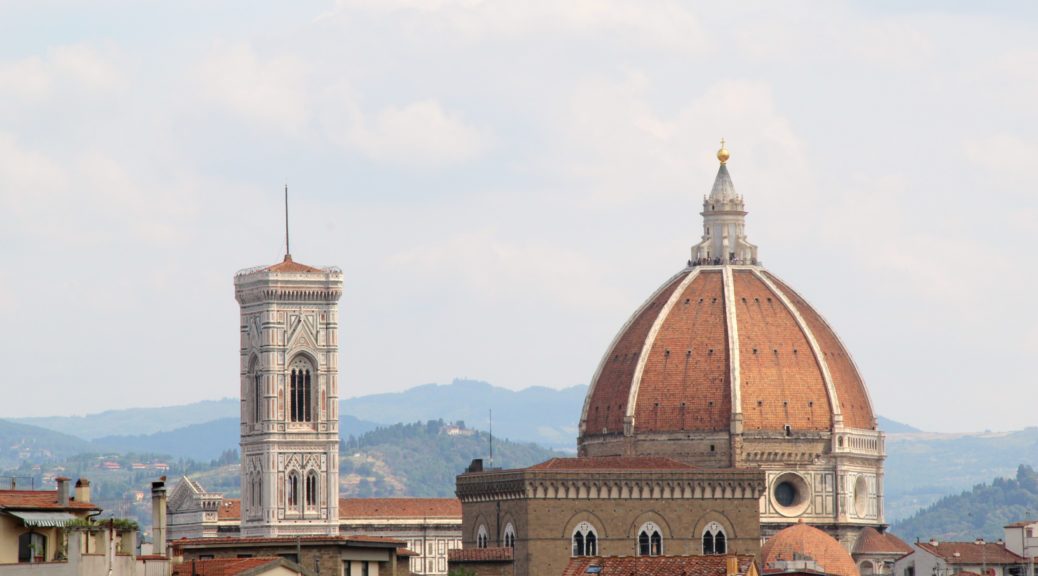
Florence (Part Two)
This blog will focus on Florence’s Duomo and Baptistery. The Duomo is officially named the Santa Maria Del Fiore, or St. Mary’s of the Flower (referencing the origin of Florence’s name). It is the fourth largest Christian church in the world. Construction of the cathedral began in 1296. Work on the external decoration, consisting of green, pink and white marble, began in the 14th Century and was completed in 1887. The dome is known as Brunelleschi’s Dome and is crowned by a “lantern.” There were many engineering challenges involved in building the dome. If you would like see a brief explanation of these challenges and how Brunelleschi may have solved them, you could watch the video, How an Amateur Built the World’s Largest Dome, at https://www.florenceinferno.com/the-brunelleschi-dome/ (it is about a 4-minute video). You will need to scroll down to the bottom of the page to find the video.
The Duomo is so massive, it is hard to get far enough away to take a picture that gives the sense of the entire cathedral. The first few pictures below were my best attempt; the second one includes the bell tower which is a separate structure. I have also included pictures of the dome, which to this day, is the largest dome made from brick. Finally, there is a close-up shot of the lantern.


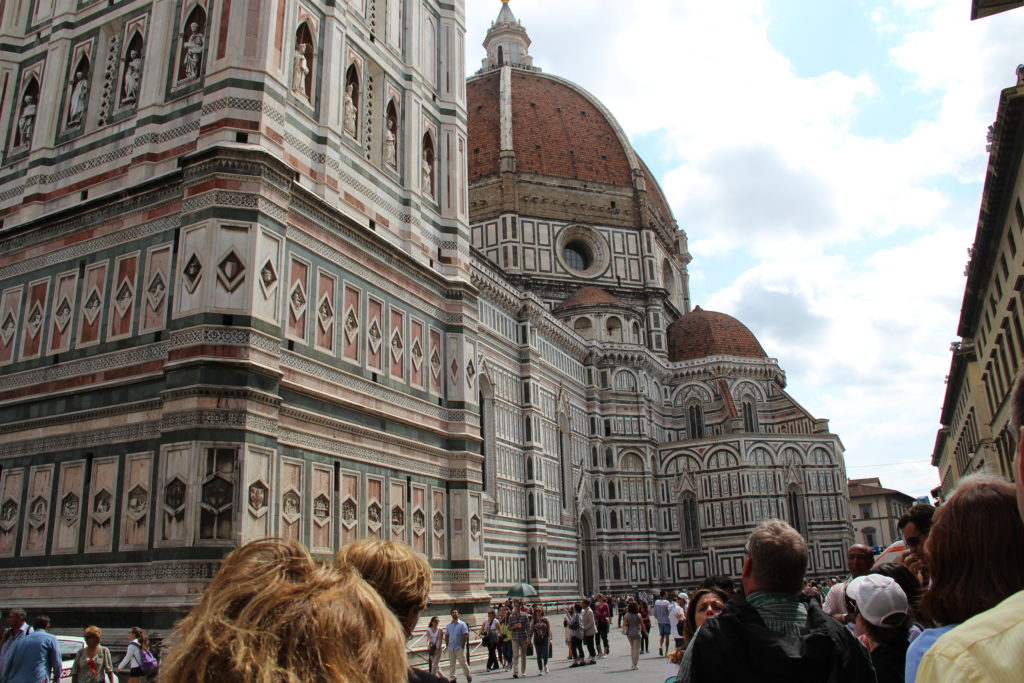

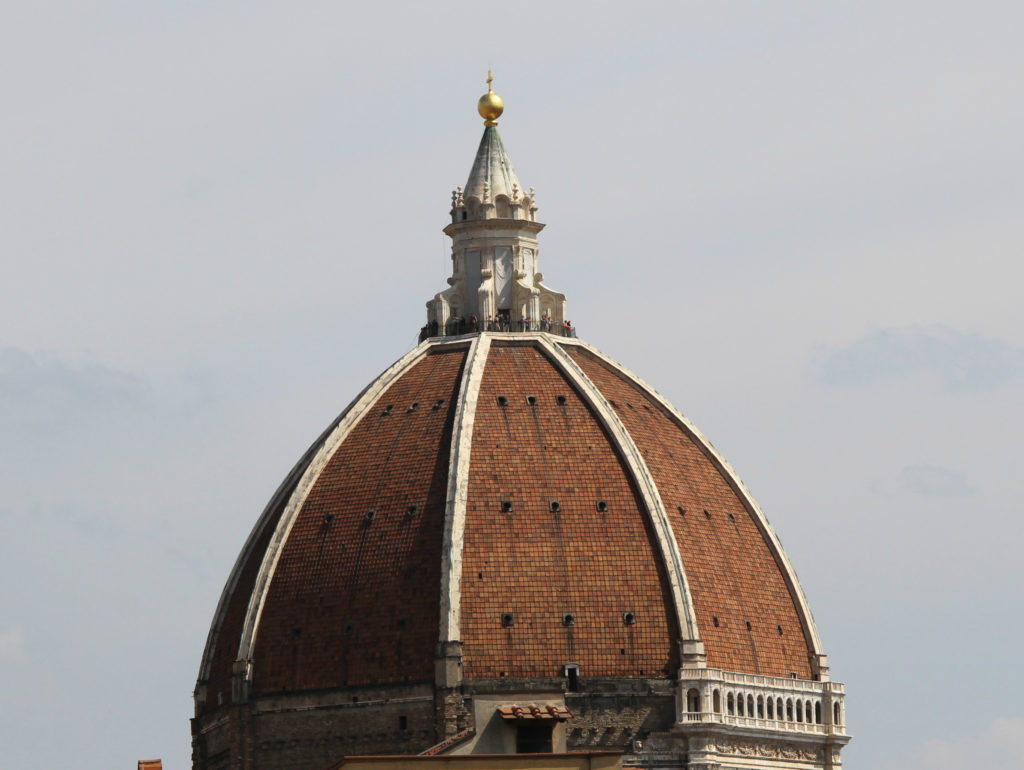

The next few pictures will give you a sense of the detail on the facade. The bronze doors are a relatively recent addition, with work completed between 1899 to 1903. They are decorated with scenes from the life of Mary. Above the door is a fresco with Jesus and some of the apostles. The next picture is of the rose window. Beneath the window, there is a sculpture of Mary holding Jesus (central figure) and sculptures of the apostles. I have also included a close-up of the rose window and some of the apostles.
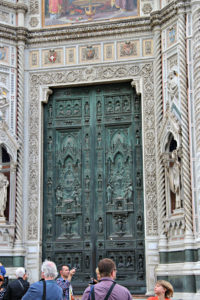


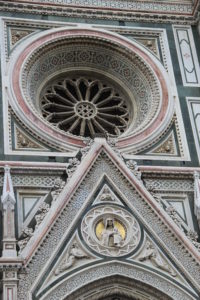
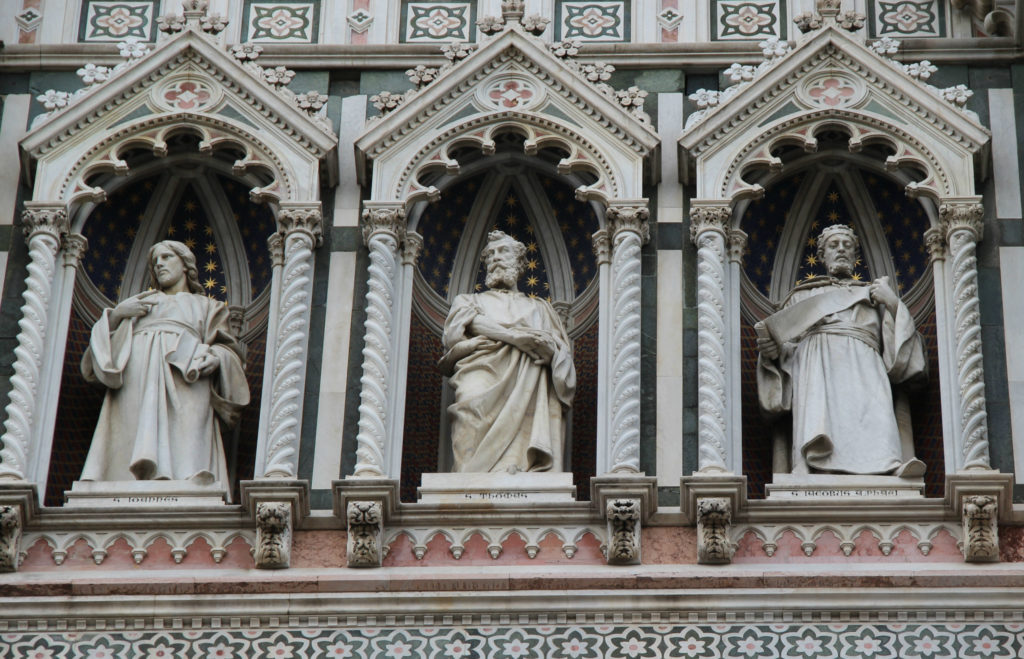
We were surprised by the openness inside the Duomo. The first pictures are of the sanctuary and altar. As you can see from these pictures, your attention will be drawn to the marble-tiled floor.
The clock pictured is over the main entrance to the church. The clock face is a fresco that was painted by Paolo di Dono (also called Uccello) in 1433. It keeps time according to Italian time which begins and ends at sunset. It is a 24-hour clock with the number 24 representing sunset. The clock hand is a golden star that moves counter-clockwise. The clock has undergone numerous repairs/restorations but is still functional.
Arnolfo di Cambio was hired to design the Duomo but died six years later. The Wool Guild then took responsibility for construction of the Duomo. The members engaged in this work were part of the Opera del Duomo (work of the Duomo) – this is abbreviated OPA and can be found prominently on the floor of the Duomo. The stained glass window, in addition to its Christian-reference to Jesus, the Lamb of God, is also symbolic of the Wool Guild’s role in the construction of the church.
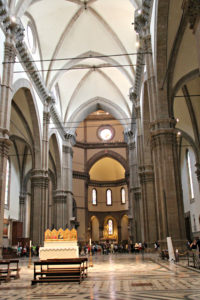
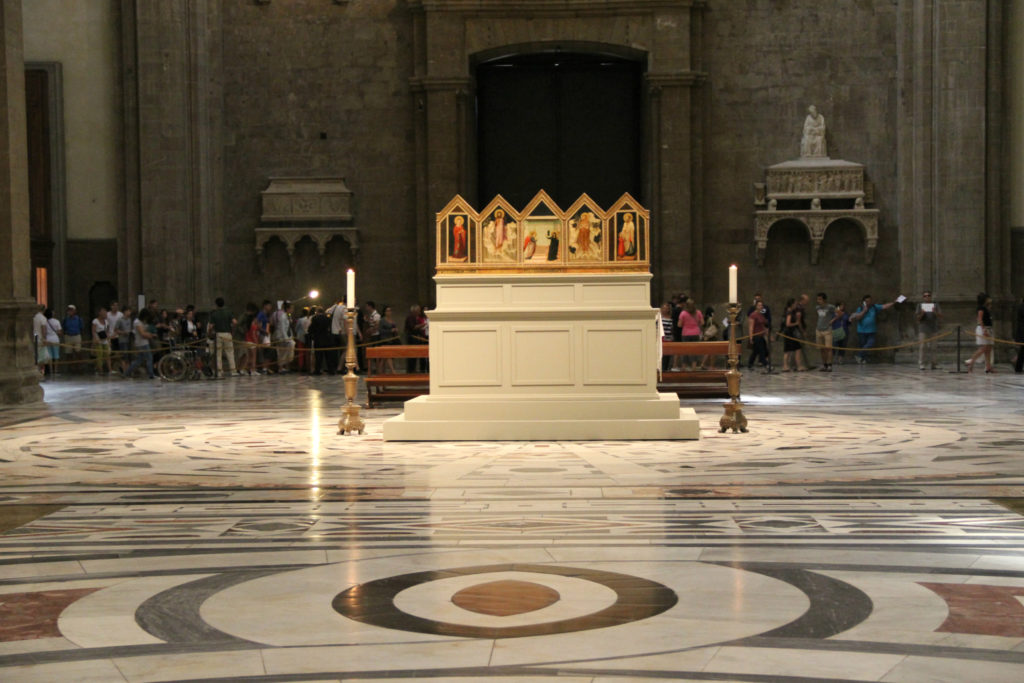
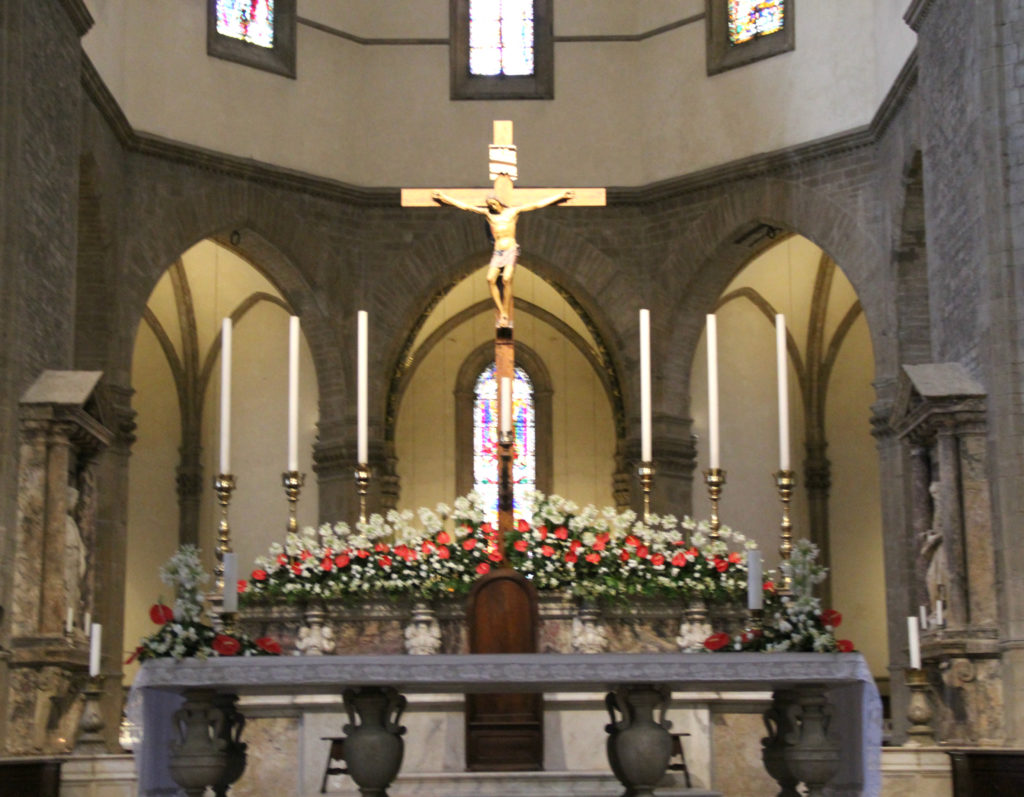
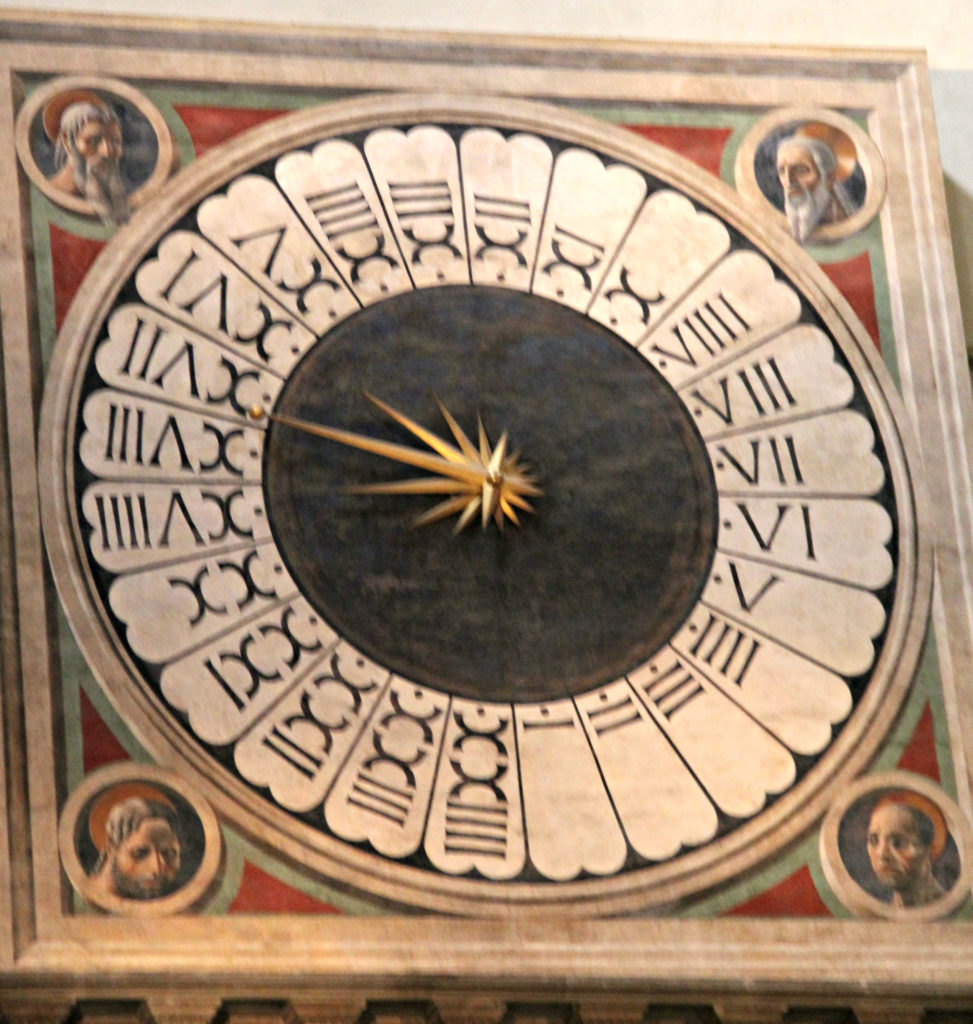
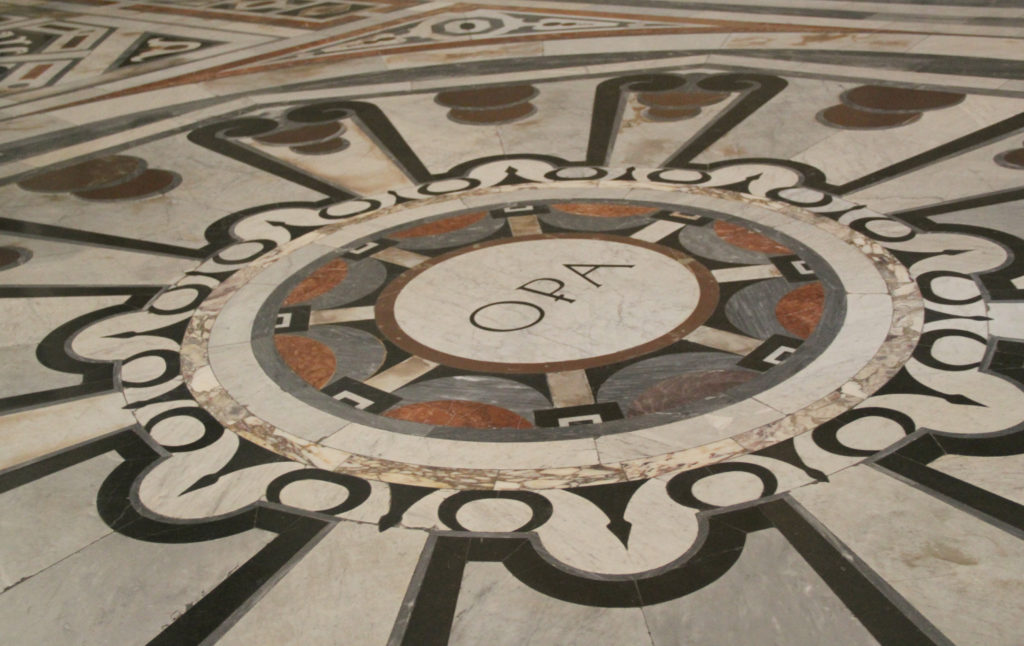
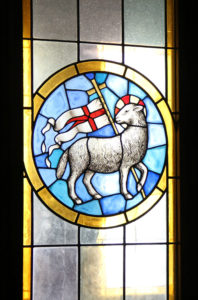
This section begins with pictures of Brunelleschi’s Dome from the interior of the church. The fresco on the dome was painted between 1572 and 1579 and depicts the Last Judgement.
Immediately next to the Duomo is the bell tower known as Giotto’s Campanile. Giotto worked on the bell tower from 1334 until he died, in 1337. It is possible to climb to the top of the bell tower to see great views of Florence – we thought 400 steps seemed a bit daunting, so we passed up this opportunity. The bell tower is decorated with the same color marble as the Duomo. The close-up picture will give you an idea of the extensive detail involved in its design.
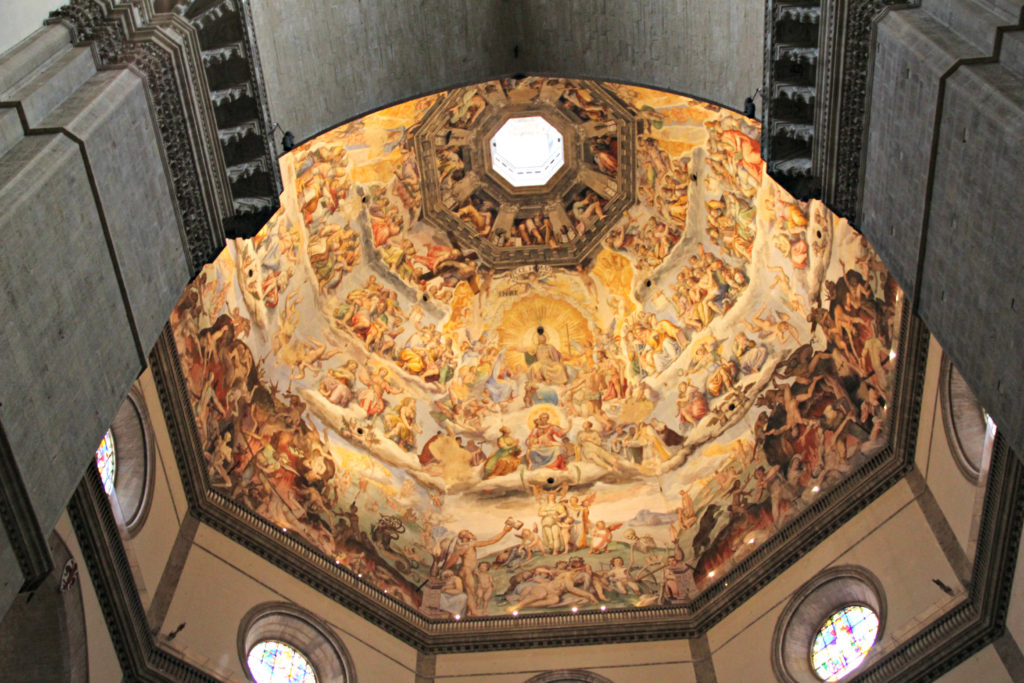

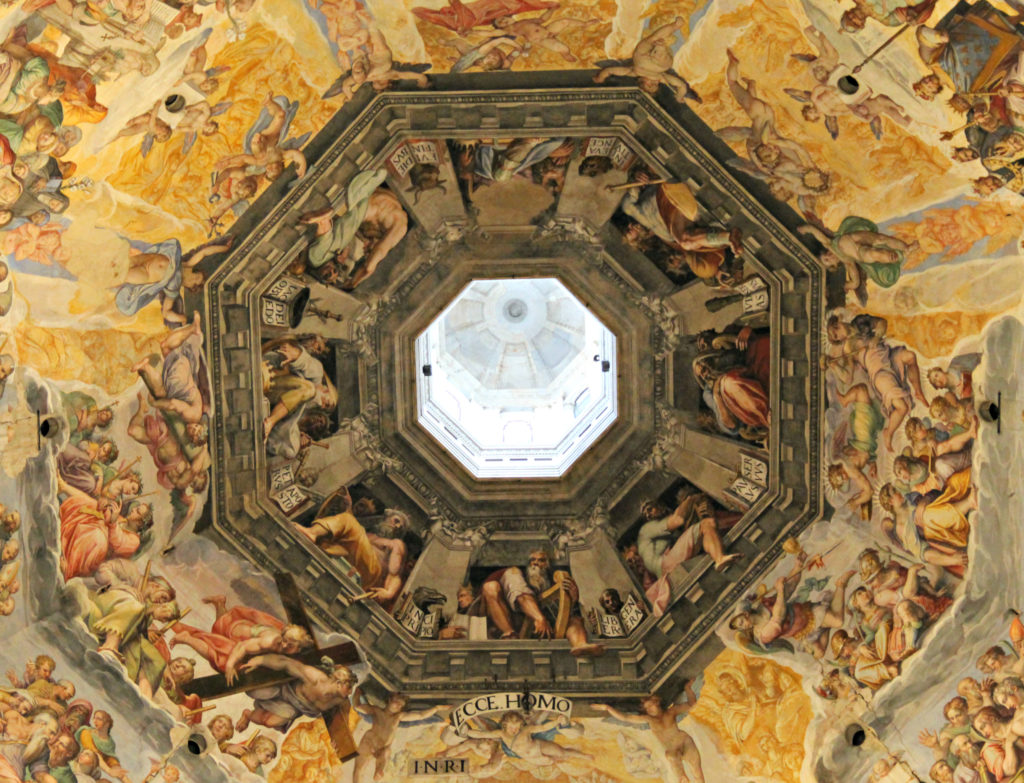


The Baptistery of San Giovanni is across from the Duomo and was actually built before the Duomo. The Baptistery was constructed between 1059 and 1128 and replaced an earlier Baptistery, probably from the 6th or 7th Century. It is dedicated to St. John the Baptist. The exterior has white marble from Carrara as well as green marble. The first picture is the exterior of the Baptistery and is one I purchased. The Duomo and bell tower is in the background to the right. As you can see, the building is octagonal and is in a piazza. As the tables suggest, you can eat lunch outside on the piazza.
Inside you will see a dome that you may not be expecting. The exterior walls are higher than the dome so it is not visible from the outside. It is mosaic and was created beginning in the 13th Century. The dome has eight panels, three of which tell the story of the last judgement. Those saved are to Christ’s right and those destined for hell are to Christ’s left.
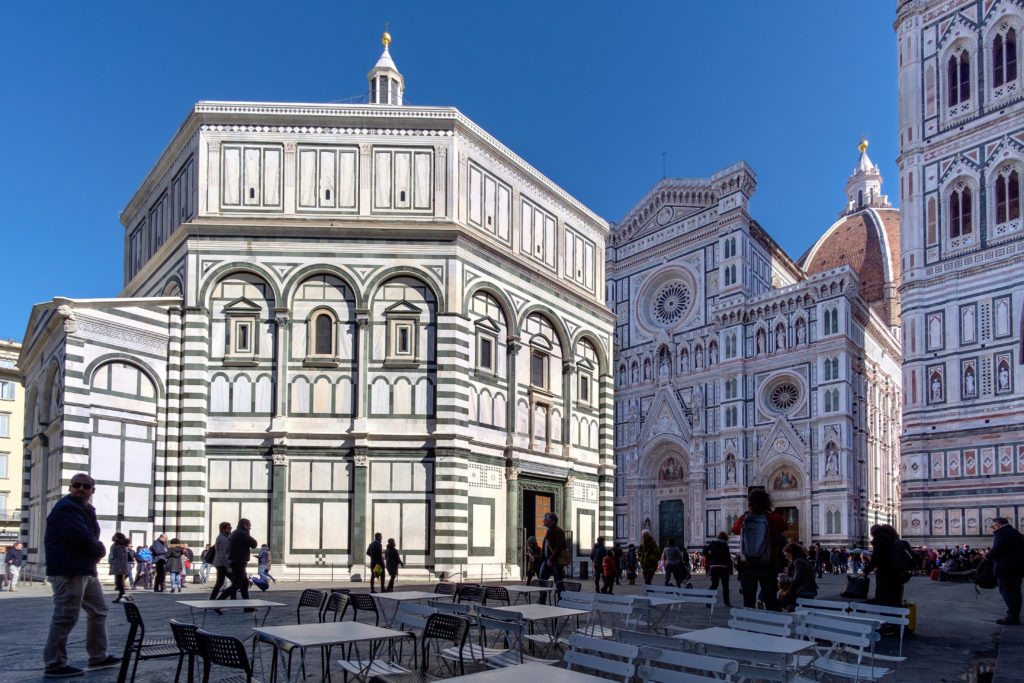

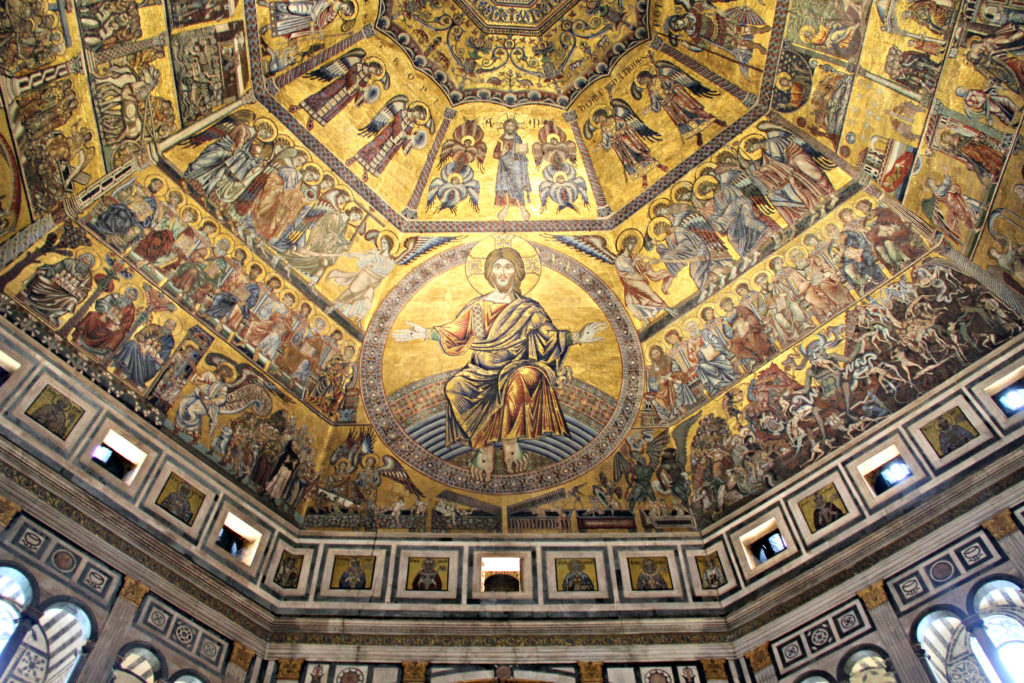
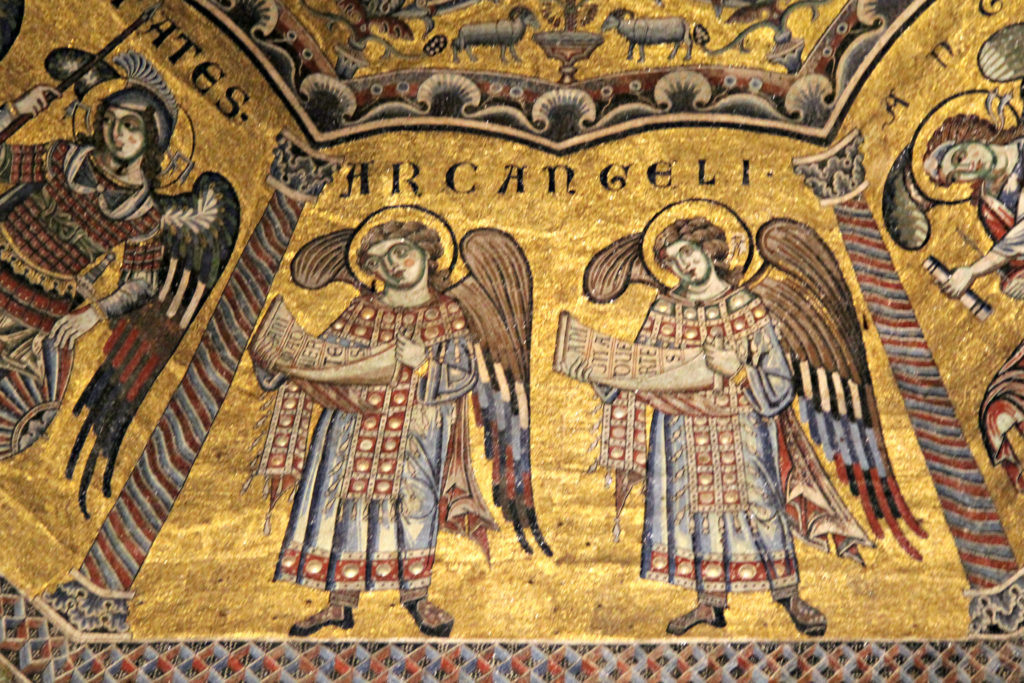
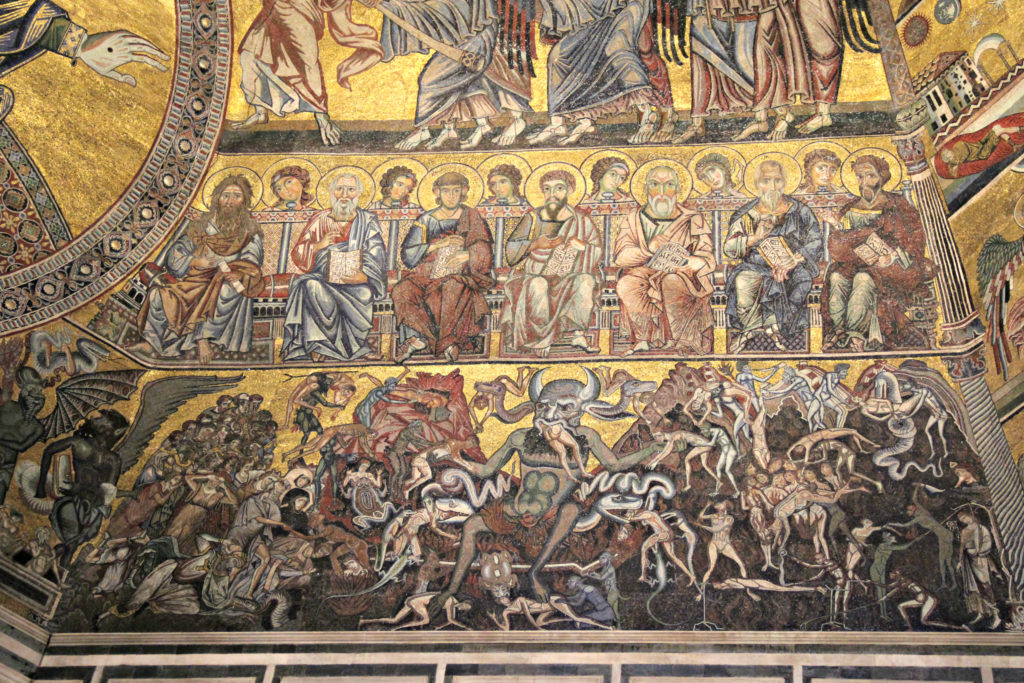
The first picture below is of the altar. This altar was added to the Baptistery in the 20th Century. I later read that there are grates in front of the altar which make some of the original ruins visible (although probably not with the ropes that were in place around the area). The floor is a mosaic and is made of marble. Much of the floor has geometric patterns. The baptismal font is octagonal and was placed in the Baptistery in 1658, but is believed to be much older.
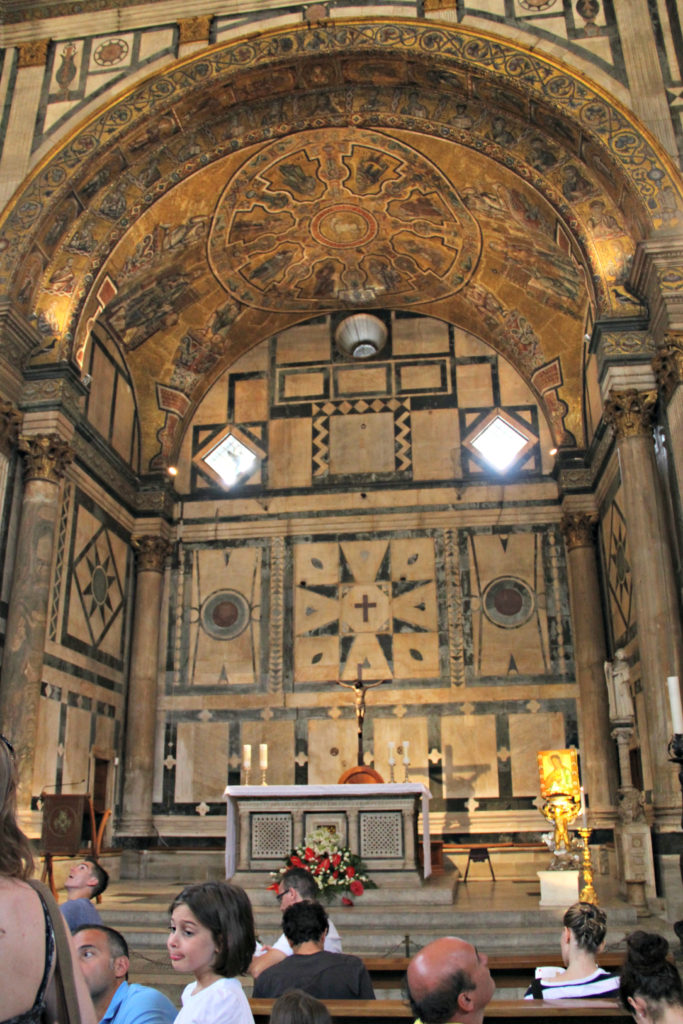
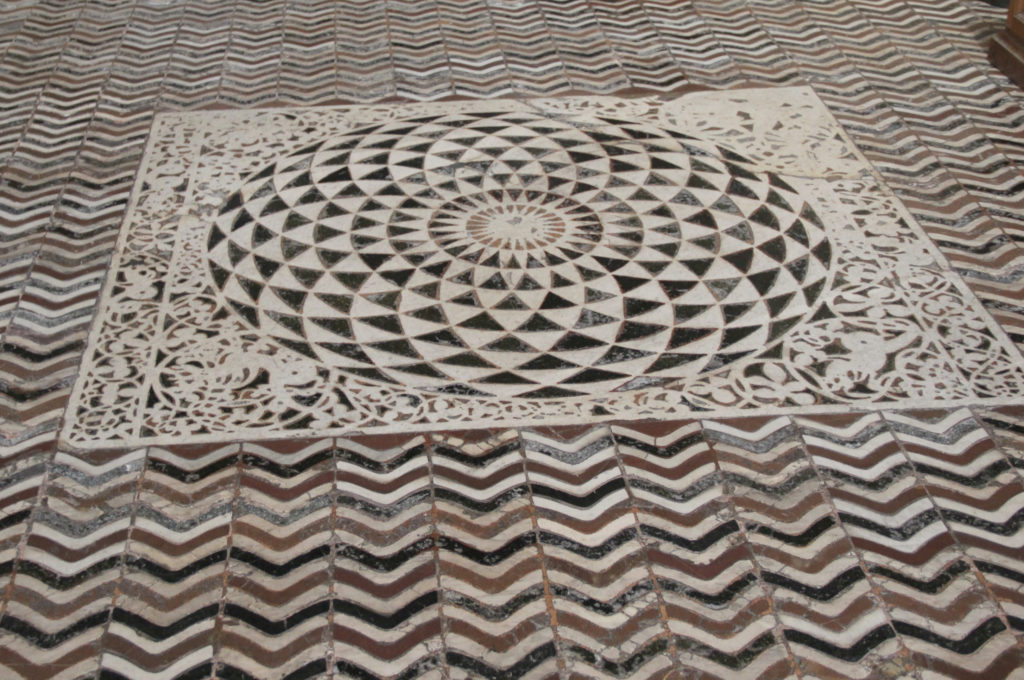
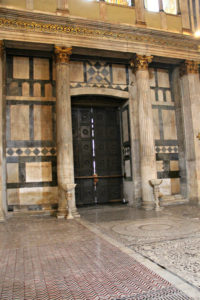
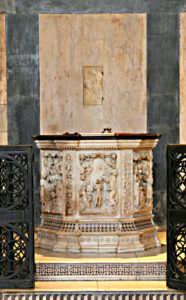
The Baptistery has three sets of doors. The ones below are known as the Door of Paradise and were actually named by Michelangelo. The doors were designed by Lorenzo Ghiberti who won a competition in 1401 with his design of the doors. His design depicts scenes from the Old Testament. There are the ten panels on the door, two of which are shown in detail in the pictures below. The top one is entitled Abraham and Isaac and the bottom one is entitled Joseph Sold into Slavery. Above these doors are three statues – the two on the right depict the baptism of Christ and the one on the left is an angel.
The last two pictures show panels from the south doors. They were designed by Andrea Pisano. There are a total of 28 squares in these doors. Twenty of them portray the life of John the Baptist and the remaining eight are “personification of virtues.” The two I have pictured are hope and and faith.
